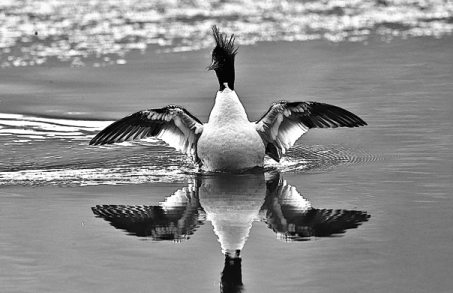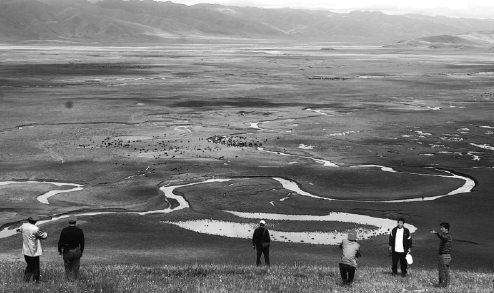The change is good for their rest
China's wetlands are a vital respite for many rare bird species on the arduous north-south migratory route. Lei Guangchun, who has been working hard for more than two decades to ensure their rejuvenation and survival, is now starting to see the fruits of his labors, Zhang Lei reports.

On Feb 2, to mark the 24th World Wetland Day, China added seven new sites to its 50-strong list of internationally important wetlands-Beida Port in Tianjin, Bila River in Inner Mongolia, Hadong in Heilongjiang, Poyang Lake near Nanji Mountain in Jiangxi, Old Yellow River Course in Minquan, Henan, Zhari Namco Lake in Tibet, and the first curve of the Yellow River in Gansu province-according to the National Forestry and Grassland Administration.
At present, the global wetland area is about 1.21 billion hectares. It is one of the three major ecosystems in the world together with the forests and oceans.
Lei Guangchun, dean of the College of Ecology and Nature Conservation at Beijing Forestry University, is among the many esteemed experts who believe the wetlands play an important and irreplaceable role in biodiversity for the ecosystem, especially in conserving water resources and nourishing wildlife.
Lei left his hometown to further his college study at the Central South Forestry University in 1978. Later, in 1997, Lei graduated with a PhD in Ecology from the University of Helsinki, Finland. He was honored with the 2018 Wetland International's Luke Huffman Wetland Science and Protection Award for a series of outstanding achievements in the research of such ecosystems, becoming the first ecologist in Asia to receive the accolade.
The dean said he has forged an inextricable bond with what he calls "the kidneys of the earth".
"I saw the wetlands on the first day after my birth," he chirps.
Lei was born in a small village in Jinshi, Hunan province, where the adjacent Lishui River and Dongting Lake intersect a vast area, creating a paradise for migratory birds and fish. Every summer, as a little boy, he would often splash around in Ximaoli Lake, catching fish and playing in the water. In 2011, the lake qualified as for construction of a National Wetland Park.
Ximaoli Lake is composed of 99 gully streams, including Maoli Lake and West Lake, one of the largest stream lakes and the second largest natural freshwater lake in Hunan. As a major node on the Yangtze River ecosystem, it is also an important transit station for north-south migratory birds.
He recalls that the local people followed a fishing operation rule which stipulated that fishing nets should only be employed during fishing season, and they stuck to the principle of "catching the big and releasing the small", adjusting the size of the apertures of the nets accordingly.
This sustainable fishing method gave the fish in Ximaoli Lake a chance to replenish itself and keep its ecological balance. Even in times of food shortage, the fishery resources remained sufficient.
But in 2008, when he returned from Switzerland where he had worked at Ramsar Convention Secretariat for five years, Lei was heartbroken and lamented on the declining environmental standards near his hometown-the indiscriminate discharge of pollutants from local agriculture that had caused the water in Ximaoli Lake to be downgraded from direct drinkable water to the current 'Class V"-"sticky and green" eutrophic water with a surplus of nitrogen, phosphorus and other elements.
"Air pollution is more visible and tangible to everyone, but drinking water safety caused by wetland pollution may be more serious," Lei said."Wetlands are the 'green infrastructural' response to climate change and a series of environmental problems."
Lei drew from his experience in ecological management and proposed to cut off the sources of pollution on the shore first. A joint defense mechanism was then established to regulate the aquaculture method through the Water Source Protection Law. When the pollution sources on the shore and in the water had been removed, wetland protection work was carried out to restore aquatic plants that would enhance the ability of the lake's own ecosystems to purify, fix and remove pollutants.
His eight years of endeavor has helped Ximaoli Lake to purify from Class V to Class III in terms of water quality, and, at its best, it sometimes reaches Class II. The restoration of the ecosystem has attracted the swans that disappeared for many years, and has also lured some nationally first-class protected animals such as the Chinese Merganser and black stork.
Lei says that around 250 species of water bird travel between breeding and wintering sites every year.
In this magnificent migration, the wetlands in China serve as the "gas stations" during their journey, but human activities continue to encroach the habitats of these migratory birds.
"From a macro perspective, the number of migratory birds passing through our country has shown a downward trend, and only in a few certain species do we see a small increase in population number.
"Take the scaly-sided Merganser duck, marked as endangered on the Red List of the International Union for Conservation of Nature as an example, they prefer to survive winter near fast-flowing rivers and dive for fish. Their population is greatly affected by the river water environment and has declined by 50 percent in the past 10 years," Lei said in a recent interview with Xinhua.
The Spoon-billed Sandpiper is a critically endangered species on the IUCN Red List. Lei said the species breeds in the Arctic Circle. In the cold winter, they fly to southern China and Southeast Asia and make pit stops in the Bohai and Yellow Sea areas. The destruction of tidal flat wetlands has been pushing this species to the brink of extinction. Spoon-billed Sandpipers are decreasing at a rate of 26.4 percent year-on-year from 2002 to 2010, and there are only around 600 left. Some scientists even worry that this species will disappear from the earth by the end of 2020.
"Fortunately, the ecological restoration of migratory bird habitats has begun, which has reversed the decline in the population and the number of spoon-billed Sandpipers has been somewhat halted," he said.
In an attempt to improve the ecological environment of the coastal wetland, with the support of the Chinese Academy of Sciences, Lei, led the expert group of the coastal wetland protection project, which, in 2016, released its "China Coastal Wetland Protection Strategy Research Report".
There are nine major bird migration routes in the world, and the East Asia-Australia migration route faces the highest number of threats, he said.
He calls for a closer global interconnection of information on the living conditions of migratory birds."We have established the East Asia-Australasia Flyway Research Center, of which the secretariat is headquartered in our college, where we investigate the life cycle of migratory birds, track and observe their status along the route, understand the needs of the birds in their habitats, carry out ecological restoration work, and jointly escort migratory birds and protect global ecological security."
Over the past 20 years he has also developed and run the "Wetland Ambassador" campaign, which encourages college students to take part in training during the summer vacation and conduct field trips to the middle and lower reaches of the Yangtze River. His team has inspired an increasing number of active and passionate college students to take up the cause of wetland conservation.
The wetland protection systems have been initially established, as China has a total of 57 internationally important wetlands, 602 wetland nature reserves, 899 national wetland parks, 781 provincial wetlands, and a large number of wetland protection communities. In the coming year, China will strengthen the protection of wetlands and promote the implementation of the "Wetland Protection and Restoration System Program", the National Forestry and Grassland Administration said.





Today's Top News
- Xi urges studying, absorbing netizens' opinions in formulating 15th Five-Year Plan
- Yuan eyes greater role among safe-haven assets
- China set to clean up online health content
- China, EU can shape climate governance
- Chengdu gearing up for World Games
- Beijing, Kathmandu aim for new heights in relations






























